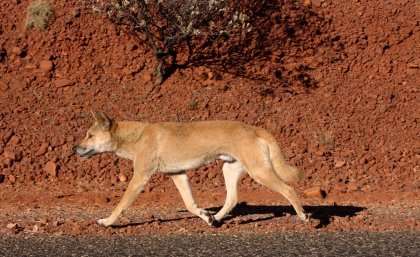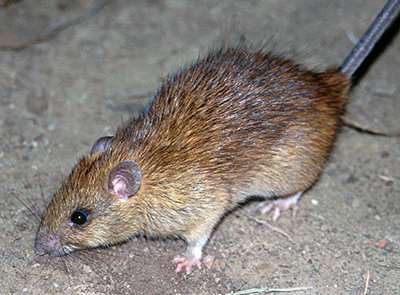Dangerous parasites worming their way through wildlife

Global research reveals some of the world's most damaging parasitic worm species are being spread by wildlife, not just by dogs and cats.
An international team of scientists, including Dr. Nicholas Clark from The University of Queensland's School of Veterinary Science and Dr. Konstans Wells from Swansea University, found that wildlife plays a greater role in the transmission of parasitic worms than previously understood.
"Some parasitic worms such as the dog tapeworm (Echinococcus granulosus) have spread around the world thanks to our domestication of animals, eventually infecting humans and causing health impacts," Dr. Clark said.
"But while the most pervasive parasitic worm species are commonly linked to domestic animals such as dogs and cats, it's important to identify the role that wildlife species play in spreading these worms."
To track the flow of parasites, the researchers developed a database of animal species infected by the most common worms and created statistical models to test how different species constrained their spread.
"Wildlife species in Australia are different to wildlife in Europe or elsewhere, so identifying discrepancies in how these parasites spread through particular communities lets us understand how we can build more targeted control strategies," Dr. Clark said.
The team found that species like the common cat tapeworm (Hydatigera taeniaeformis) can use a variety of wild species as intermediate hosts.

"This type of tapeworm uses cats as a final host, usually after eggs, larvae or cysts have been consumed in raw meat of other mammal species consumed as prey or through faecal contamination," Dr. Wells said.
"Our research has found that this tapeworm utilises a diverse network of intermediate host species, such as rats and other small mammals.
"Many of the most widespread parasitic worms infecting our domestic cats and dogs need other mammals to finalise their life cycles, meaning that pet-owners should stop pets feeding on wildlife."
Ultimately, the researchers hope to find out what wildlife species domestic animals should avoid interaction with in order to curb the transmission of parasitic worms.
"Parasitic worms can cause symptoms from fatigue to unexplained weight loss and serious organ dysfunction in humans, and the World Health Organization reports that hundreds of millions of people need to be treated for the problem each year," Dr. Clark said.
"Now we understand wildlife's part in the puzzle, we might be able to start turning the tide on these parasites."
The research has been published in Ecography.
More information: Konstans Wells et al. Global patterns in helminth host specificity: phylogenetic and functional diversity of regional host species pools matter, Ecography (2018). DOI: 10.1111/ecog.03886
Journal information: Ecography
Provided by University of Queensland


















